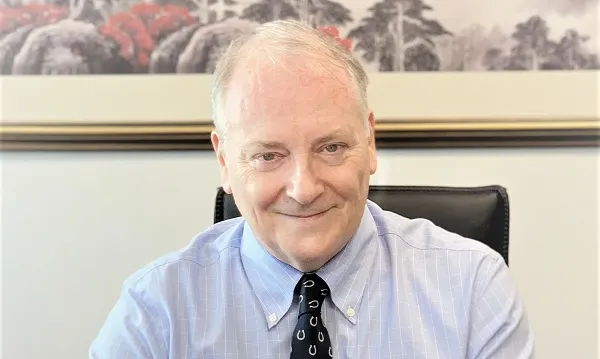
Enterprize Energy develops Vietnam's 3,400MW offshore wind giant
Its development banks on the European firm's experience in the UK and Taiwan.
UK-based wind developer Enterprize Energy revealed plans to develop a 3,400MW offshore wind park in Thang Long, offshore the south central province of Binh Thuan in Vietnam. The development of the country’s largest offshore wind farm borrows from and improves upon the firm’s experience in developing offshore wind farms in the UK, US and Taiwan.
In an interview with Asian Power, Enterprize Energy CEO Ian Hatton discussed initial plans for the Thang Long wind farm, including technological upgrades to its 9.5-10MW turbines and steel foundations, as well as its pioneering role in shaping Vietnam’s regulatory framework for offshore wind projects.
What are you currently working on? Can you share with us the progress of your projects?
At the moment we're working on three projects. One is the Hai Long project in Taiwan and one is the Thang Long project in Vietnam. The other is a hybrid project in the UK. In Taiwan, we are the net 20% owner of the Hai Long project which has its key consents and off-take contracts.
In Vietnam, we are developing the Thang Long project which is nominally designed for the development of 3,400MW of power. We received a formal direction from the Prime Minister of Vietnam in January 2019 to proceed with survey works and to submit the project into the national power development plan.
What characteristics make Vietnam ideal for offshore wind projects?
Primarily, Vietnam’s wind resources are some of the best in the world. The water depths are within the range that is manageable with current engineering, and our understanding of what makes commercial development possible.
Having an active oil and gas industry, there is also a fabrication industry, which is capable not only of fabricating the turbine foundations but also installing them. There is a developing onshore wind sector with technical expertise in operations and maintenance and so we believe this will be capable of expansion to serve the offshore projects over time.
How about Taiwan?
The attraction of Taiwan was the wind resource and the existence of a regulatory framework. There was an understanding that with the FIT price being offered and our technical and economic knowledge, we believed there was a chance of making economical viable projects.
Have you observed any differences between dealing with regulatory bodies in Vietnam and Taiwan?
In Vietnam, there is no bespoke regulatory framework for offshore wind. However, regulation does exist for practically every aspect that is required for such projects. So what we're doing together with EVN’s PECC 3, which is the state's consultancy company, is preparing the project for inclusion in the National Power Development Plan. Therefore by working the Project through the development process, it will effectively establish the regulatory framework for offshore wind in Vietnam by practical example.
The primary difference of course is the different political structure and a centrally planned economy versus one which is run by democratic institutions and so forth. There are other detail factors that come into play in Taiwan versus Vietnam but each country is very successful in its own right in economic terms.
What are the new upgrades that you're incorporating into the Hai Long wind farm?
The exact technical specification of the Hai Long project are confidential. Taiwan offshore wind projects have to take into account the potential occurrence of typhoons and seismicity consequently the Taiwan Strait is probably the most technically demanding environment to build an offshore wind project in the World and that comes at a price. It's not like building offshore wind in Europe by any means.
Can you describe further how the foundations are adapted to seismic activity and typhoons?
The foundation is an evolution of the four-legged hurricane-resistant jacket that we had developed for the US Gulf of Mexico. Basically, they will be more robust to cope with deeper water and seismic liquefaction risk. We're looking at depths up to around 50 metres, which is much deeper than most European waters.
How is the Thang Long wind farm different from the Hai Long one?
Above the water line the two are broadly similar in terms of wind resource. Below the water line Hai Long is in deeper water (to 50 metres) compared to Thang Long (25-45 metres). Typhoon risk is lower at Thang Long. Additionally, Hai Long is engineered to deal with the elevated occurrence of seismic activity on the Taiwanese continental shelf.
Of course, the scale of the Thang Long Wind Project is much greater than Hai Long (3,400MW vs 1,044MW) We believe it is currently the world's largest contiguous offshore wind development.
The other difference is that we've already entered into agreements with the construction company to fabricate the structures just over 100 kilometres away from the site in Southern Vietnam.
That guarantees a high level of localization for those people and projects. Maybe 60-65% of flowing capital used to construct the project will end up in Vietnam. That's a significant advantage for Vietnam.
And the other difference is that by developing the entire 3,400 MW in a coordinated fashion, we're able to programme the construction more efficiently to reduce cost which impacts the price of electricity delivered from the project. 3,400MW is a notional size. It could be significantly larger if the government decides that is what they need. Certainly, with a site of 2,000sqkm, the project could host significantly more than 3.4GW.
Because we're planning to install the project between 2022 and 2027, we expect to see that wind turbine technology will evolve and improve. By 2027 it is very likely for example that turbines rated at 15MW will be commercially available. Our consenting activity will take that into account.
What is it like financing a project of this scale?
The first thing we've done is we've mandated Societe Generale to lead to structure and lead the financing. We've signed a mandate to lead on that front. We've worked with them before and they are a bank that supports projects which are ground-breaking.
You said that you plan to have the turbines on the water as early as 2023. How do you plan to execute this?
We are speeding the process up by parallel processing consenting, engineering, contracting and financing. It is very much subject to the approval process, financing and contracting but 2023 should be achievable for Phase 1 (600MW). The full project would be built in multiple phases to the full 3,400 MW until 2027.
There's been this criticism of renewables as not enough for baseload power. Do you have plans to invest in energy storage or other technologies?
Certainly. We are looking at UK technology, liquefied air energy storage (LAES), which can work very well with wind farms and other renewables.
The other areas that we're looking at, which really relates to what we're doing in the UK, is that we've gone back to the development of our hybrid concept. This is based on the concept of co-developing offshore wind and natural gas which is converted to electricity at the site. We are party to three gas fields that can be developed this way where we plan to co-locate offshore wind turbines. Our concept is a commercially sensitive business model but I can say that we have a patient strategy to incorporate hydrogen production powered by wind which can then be stored, transmitted or converted to electricity by combustion at site.
Another area in which we’re very keen to move forward involves the concept for the desalination of seawater using offshore wind. We've developed a project concept for a real location at an undisclosed location. The output from that project would be fresh-water, enriched brine and electricity.
Are you investing in the transmission side of the power plant or does the Vietnamese government handle that?
We are responsible for engineering and funding everything from offshore to the onshore sub-station platform. Grid reinforcement beyond that point is currently the responsibility of EVN. We understand that this situation is under review by Government.
Back in March this year, I was honoured to be the first non-Vietnamese person to address the central Economic Committee of the Communist Party on the subject of renewable energy. I was able to make a number of recommendations to facilitate the development of offshore wind in the country. One of the recommendations was to investigate the ‘build and transfer’ model that is prevalent in the UK as an option for Vietnam.
This helps with funding for transmission upgrades or the basic transmission infrastructure and is very similar in concept to the system used in the UK. We would be responsible for designing and funding the construction of the electrical export infrastructure, but then on energisation, the export infrastructure’s ownership will be transferred to another entity at a low cost of capital and that will help the project’s economics.



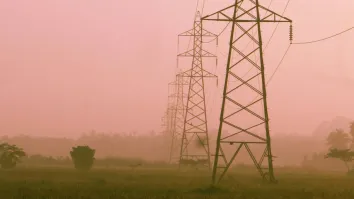
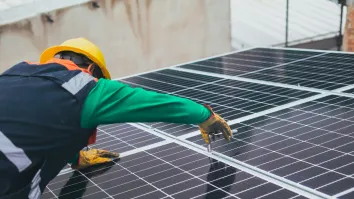





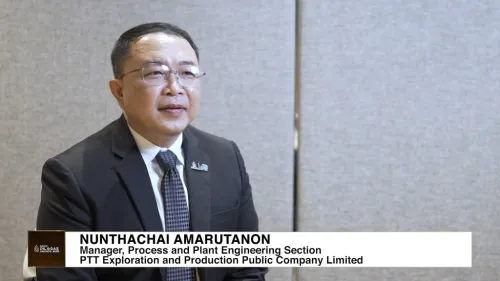


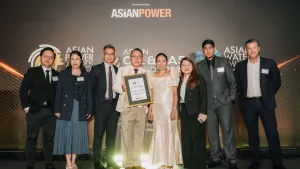





 Advertise
Advertise







